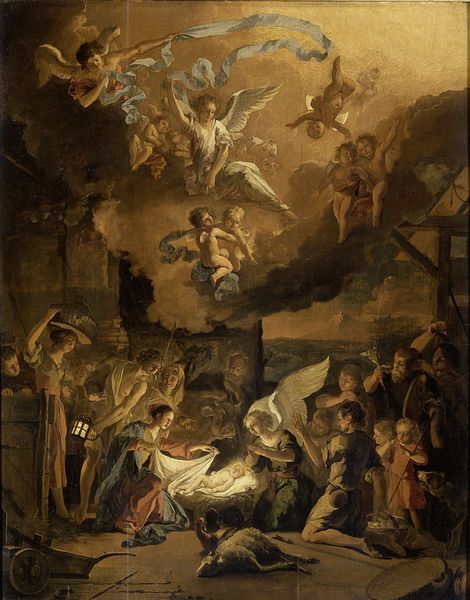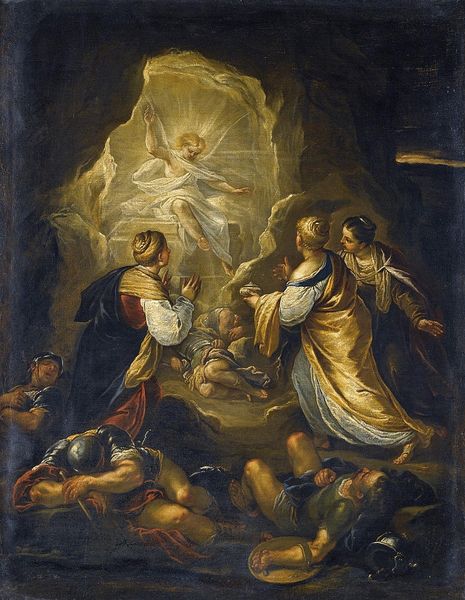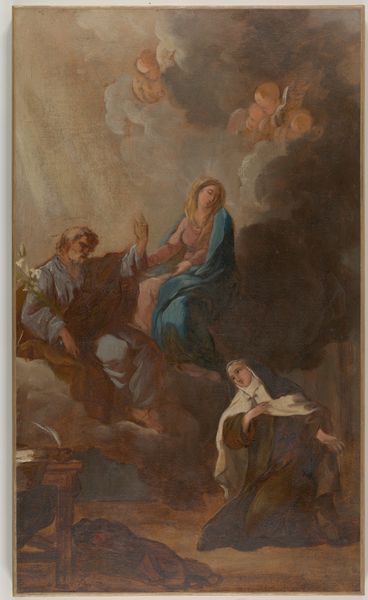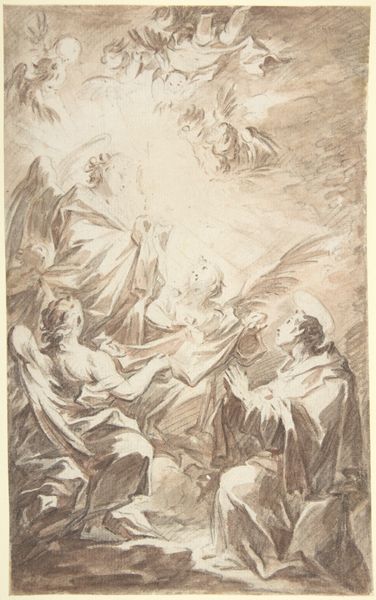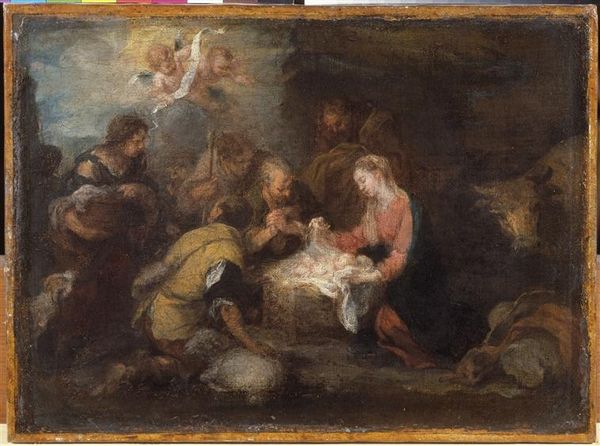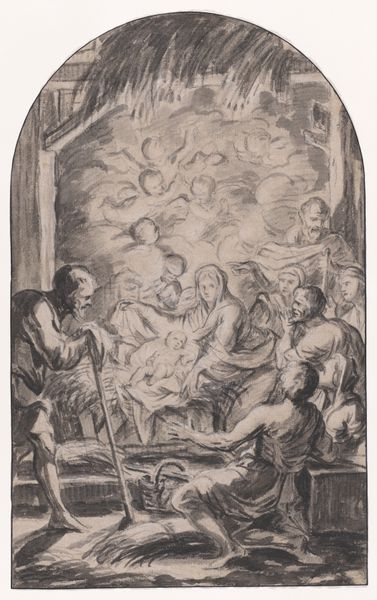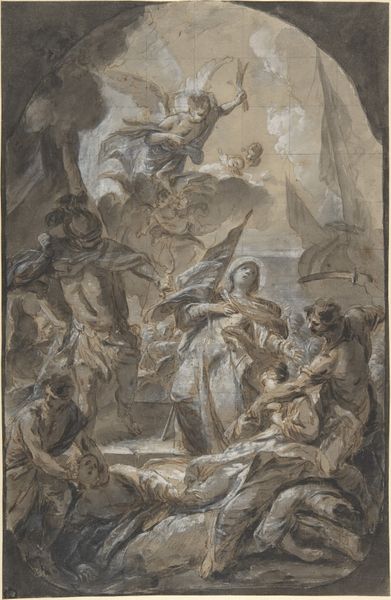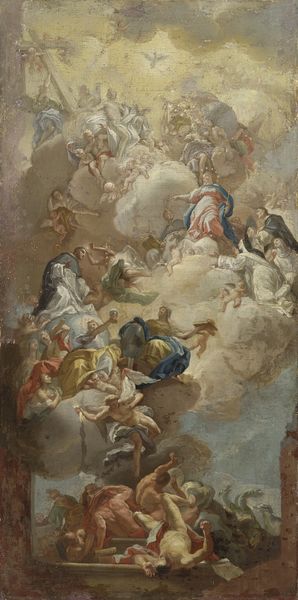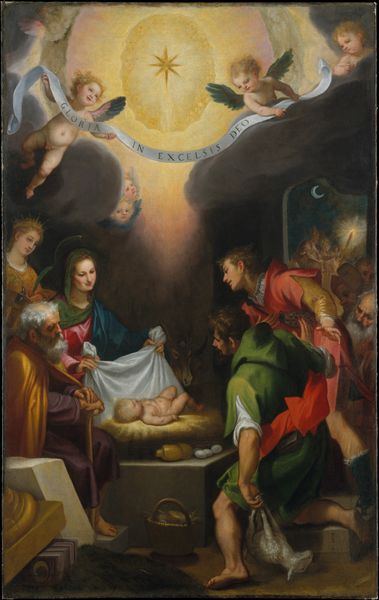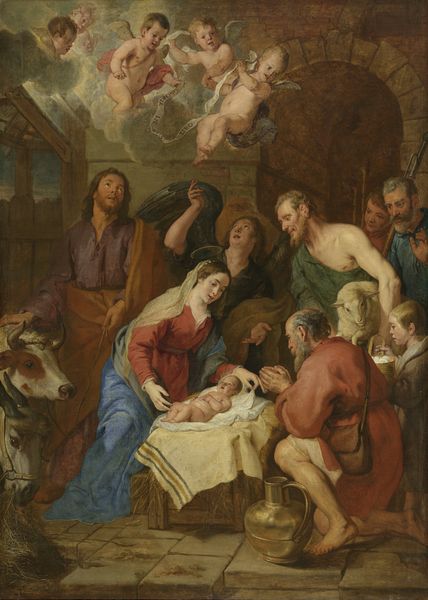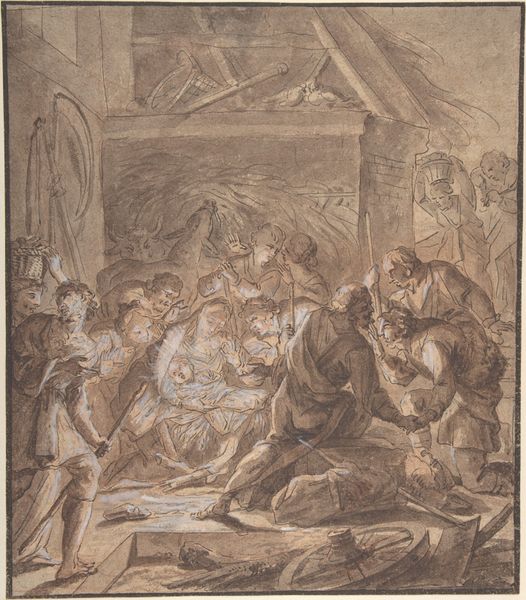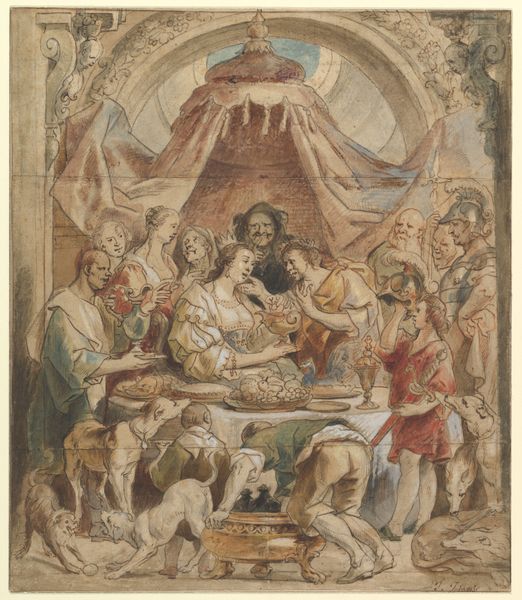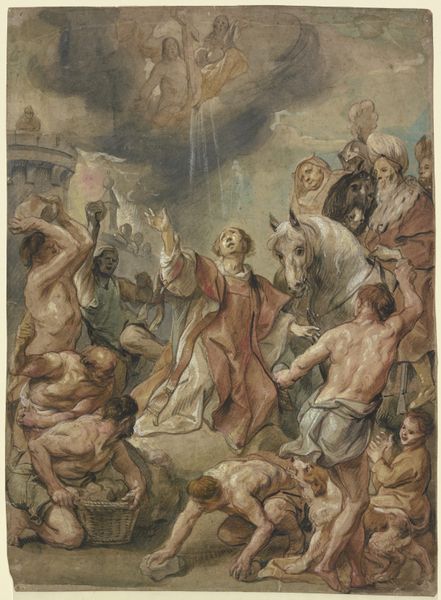
drawing, print
#
drawing
#
abstract painting
# print
#
possibly oil pastel
#
fluid art
#
acrylic on canvas
#
coffee painting
#
underpainting
#
painting painterly
#
watercolour bleed
#
watercolour illustration
#
watercolor
#
angel
Dimensions: 16 1/4 x 11 in. (41.3 x 27.9 cm)
Copyright: Public Domain
Editor: This is François Boucher's "The Adoration of the Shepherds," likely created between 1700 and 1770. It's currently at the Metropolitan Museum of Art. The image looks like a print or drawing, maybe with watercolors. I'm immediately drawn to how the figures seem to emerge from the paper. What strikes you most about this piece? Curator: Well, looking at Boucher through a materialist lens, I'm fascinated by how the means of production reflect the socio-economic conditions of the time. Prints and drawings, unlike grand oil paintings, allowed for wider distribution of images to a growing consumer base. Notice the loose, almost sketch-like quality. Do you think that implies something about its intended audience, perhaps suggesting affordability and accessibility? Editor: That’s interesting! It does seem less formal, somehow, which I guess could have made it appealing to a broader public than, say, a royal portrait. So, you're saying the materials themselves played a role in shaping who could engage with religious art? Curator: Precisely. And consider the implications of depicting shepherds – laborers – as central figures in a religious narrative. What does that say about the value placed on labor, even within the context of religious worship, during this period? The raw materials used to produce and spread the image democratized it, thus making the figures portrayed, shepherds, common folk. Editor: That gives me a whole new appreciation for Boucher. I usually focus on the artistry, but seeing how the materials and production methods connected with the audience is pretty insightful. Curator: Indeed. By understanding the materials, production processes, and social context, we can move beyond mere aesthetic appreciation to uncover the power dynamics and ideologies embedded within art. Editor: This perspective helps to view this piece less as some religious icon and more as an accessible commodity in 18th century Europe. I had never considered this before, so thanks! Curator: My pleasure. Always look beneath the surface!
Comments
No comments
Be the first to comment and join the conversation on the ultimate creative platform.
